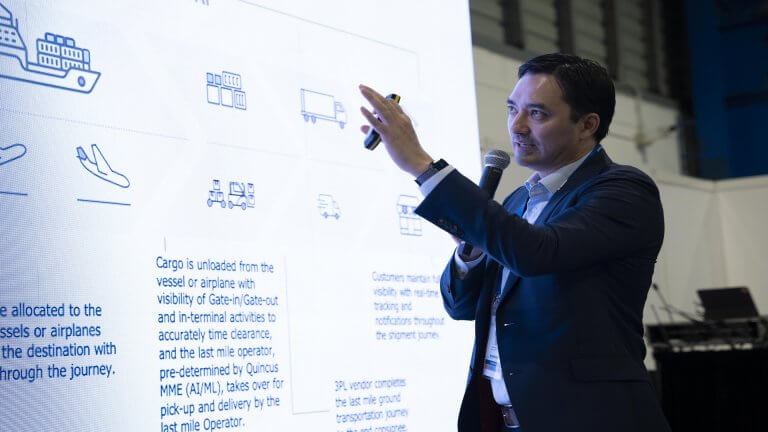
Technology is central to supply chain network optimization
Supply chain network optimization focuses on eliminating process inefficiencies throughout the supply chain and progressively developing a logistics network model that is data-driven, highly collaborative, and adaptive to global and local business conditions. This is essential to helping brands and logistics operators deliver higher service standards at lower costs.
How can software optimize your supply chain network?
Research shows that focusing optimization efforts on the supply chain can yield double the cost reductions compared to optimizing other operational areas. It can also reduce inventory holdings by over 50% and speed up cash-to-cash cycles by at least 3 times.
But this is a daunting task without technology. Traditionally, the data needed for supply chain visibility and optimization has resided in silos throughout logistics networks—in outdated, inefficient channels such as shared spreadsheets or even paper-based records. Unifying these and providing a single view of where problems are (in order for supply chain operators to begin addressing them) is the fundamental role supply chain technology plays in untangling this knot.
Modernizing the back end
Studies have found that a typical shipper can lose up to $150,000 per year from invoice mistakes. Manual processes are not only labor-intensive, but they also run the risk of racking up additional costs when human error strikes. The same holds true for order management, where the average cost to rework an order has been estimated at $200-250. As e-commerce continues to boom in the wake of the pandemic, so will these unwanted costs—to say nothing of the inability to scale with demand or respond swiftly to unexpected changes.
Digitalization and automation of back-end processes such as order management is a crucial first step in network optimization. Not only does this free up human capital for more value-added tasks, it creates opportunities to centralize data from processes across the supply chain for greater speed and clarity in decision-making. Increasing automation, in particular, is a focus area over the next 1-3 years for 63% of companies surveyed in the wake of COVID-19.
Optimizing the last mile
Last-mile delivery costs can run as high as 53% of the total cost of shipping. Distance traveled, time taken, and cost of movement all contribute to this.
Route optimization technology tackles this by helping each delivery vehicle reach its destinations through shorter and better routes, thereby reducing the overall number of vehicles needed to fulfill a given number of orders. Integration with external data sources can allow traffic and weather conditions and other potential obstacles to be factored into route generation, further improving its accuracy.
Paired with fleet management software, this translates to fewer vehicles and less fuel used, along with better visibility into driver habits that can help further reduce costs in areas such as vehicle idling time. The average delivery truck spends 25% of its daily operating hours idling, using some $2,500 worth of fuel in the process and accelerating its depreciation–which in turn incurs maintenance costs. Better route planning and more granular fleet control can cut these costs.
Planning better networks
On a broader and more strategic level, technology is also making it possible for organizations to identify ideal courses of action for their supply chains and prepare for change well in advance. One example is digital twinning, which leverages real-time supply chain data to construct a virtual replica of a logistics network for testing the impact of scenarios such as facility relocations, alternative sourcing, or unexpected disruptions. This approach revealed cost savings opportunities of as much as $60 million for a global manufacturer during a network optimization study conducted at the height of the disruptions wrought by COVID-19.
From modernizing and streamlining individual processes to network-wide change, technology has never had a more relevant role in creating resilient, cost-effective supply chains.
Discover what technology your supply chain needs to meet the challenges of tomorrow’s logistics landscape. Generate your solution.
Subscribe to keep up with our latest news









